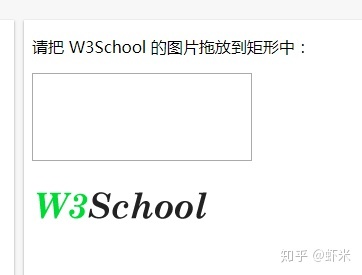分享个python实例,自己写的一个感知机,仅供学习,自行调整参数,修改代码!
效果图:

代码分享:
import numpy as np
import matplotlib.pyplot as plt
class Perceptron(object):
"""
根据课上所学,实现了一个感知机,包括AND, OR, NOT, 可以使用正态分布的样本数据
感知机原理可参考:https://zhuanlan.zhihu.com/p/29836398 https://zhuanlan.zhihu.com/p/42438035
https://blog.csdn.net/u012759262/article/details/101943109
"""
def __init__(self, kind='AND'):
self.weights = np.array([0.2, 0.4], ndmin=2) # 初始化权重,为图方便硬编码了
self.bias = 0.1 # 初始化偏置,为图方便硬编码了
self.inputs = np.array([[0, 0], [0, 1], [1, 0], [1, 1]]) # (m,2)矩阵 m:=dataSize,每个样本数据为二维,即2个特征,(f1, f2)
if kind.upper() == 'AND':
self.labels = np.array([[-1], [-1], [-1], [1]]) # AND (m,1)矩阵
elif kind.upper() == 'OR':
self.labels = np.array([[-1], [1], [1], [1]]) # OR
elif kind.upper() == 'NOT':
# NOT, w2 cannot be zero, let w1 be zero, so have to make labels like this
self.labels = np.array([[-1], [1], [-1], [1]])
else: # default is AND perceptron
self.labels = np.array([[-1], [-1], [-1], [1]]) # AND (m,1)矩阵
self.dataSize = self.labels.size
self.misclassifiedSet = np.array(np.zeros((self.dataSize, 1), dtype=int)) # 错分集标识初始化,(m,1)矩阵
self.learningRate = 0.1 # adjust this when necessary
self.errors = np.array([]) # errors in each iteration
self.fig, self.axes = plt.subplots(1, 2) # for plotting diagram
self.initDiagram()
self.firstPlot = True # just for special usage
def __str__(self):
"""
输出训练后的感知机学习到的权重、偏置
"""
return 'weights\t:%s\nbias\t:%f\n' % (self.weights, self.bias)
def initDiagram(self):
self.fig.set_size_inches(10, 5) # set figure window size (10 inches * 5 inches)
# plt.figure(figsize=(10, 5))
self.axes[0].set_title('Perceptron Demo')
self.axes[0].axis('scaled')
# self.axes[0].axis('square')
# self.axes[0].axis([-1, 2, -1, 2])
self.axes[0].axis([0, 9, 0, 9])
self.axes[0].set_xlabel('feature 1')
self.axes[0].set_ylabel('feature 2')
self.axes[0].grid()
# self.axes[1].axis('scaled')
self.axes[1].set_title('Cost Curve')
# self.axes[1].axis([0, 30, -10, 0.5])
self.axes[1].set_xlabel('iteration times')
self.axes[1].set_ylabel('errors', color='C0')
self.axes[1].set_xticks(range(0, 50))
self.axes[1].grid()
def plotBoundary(self):
"""
图形可视化,绘制样本点分布,绘制决策边界线,要和show()配合使用
"""
# .T就是转置, *是numpy特有的,类似C++的指针解引用,这里是二维数组解引用,即降维。而且是先运算的.T然后解引用迭代器
# plt.plot(*self.inputs.T, 'o') # [0 0 1 1] [0 1 0 1]
if self.firstPlot == True:
for i in range(self.dataSize):
if self.labels[i] == -1:
self.axes[0].plot(*self.inputs[i], 'c.') # negative sample with marker style 'c.'
elif self.labels[i] == 1:
self.axes[0].plot(*self.inputs[i], 'r+') # positive sample with maker style 'r+'
x1 = np.linspace(-1, 6, num=3) # not necessary to calculate too many points for it's a straight line
if self.weights[0, 1] != 0:
x2 = (-self.bias * np.ones(3) - self.weights[0, 0] * x1) / self.weights[0, 1]
self.axes[0].plot(x1, x2) # plot decision boundary line
costX = np.arange(0, self.errors.size, 1)
print('costX:%s' % costX)
print('costY:%s' % self.errors)
self.axes[1].plot(costX, self.errors, 'k-') # plot cost curve
plt.pause(0.1)
self.firstPlot = False # try comment this line *_<
def show(self):
plt.show()
def adjLearningRate(self, learningRate):
self.learningRate = learningRate
def activation(self):
z = self.weights.dot(self.inputs.T) + self.bias # 激活输出Z = W·X^T+b z.shape():=(1,m)
return z.T # (m,1)矩阵
# return 1 if z >= 0 else -1
def genMisclassifiedSet(self):
# print('activation output:->\n%s\n<--' % self.activation())
y = self.activation() * self.labels # y still is (m,1)
# print('activation multiplied by label:->\n%s\n<--' % y)
self.misclassifiedSet.fill(0) # remember to reset
errSum = 0
for i in range(self.dataSize):
if y[i, 0] <= 0.1: # criterion, adjust this when necessary
errSum += y[i, 0]
self.misclassifiedSet[i] = 1
self.errors = np.append(self.errors, errSum)
# print('misclassifiedSet:->\n%s\n<--' % self.misclassifiedSet)
def training(self, iterationTimes=10):
if iterationTimes == 10:
iterationTimes = 50
iterationCnt = 0
self.genMisclassifiedSet()
# until all samples are classified correctly, otherwise just iterate 50 times for it is linearly inseparable
while self.misclassifiedSet.any() and iterationCnt < iterationTimes:
iterationCnt += 1
print('--iteration %d times--' % iterationCnt)
for i in range(self.dataSize):
if self.misclassifiedSet[i] == 1:
print('--to update param for sample %s--' % self.inputs[i])
# print("it's label: " + str(self.labels[i]))
# fixed-increment and update once by every misclassified single-sample
# that is, a SGD(Stochastic Gradient Descent) algorithm
# Cost function: C(w, b) = -Σ y·(w·x + b) sum on every misclassified sample
self.weights += self.learningRate * self.labels[i] * self.inputs[i] # 核心部分,更新权重
print('updated weights: ' + str(self.weights))
self.bias += self.learningRate * self.labels[i] # 核心部分,更新偏置
print('updated bias: ' + str(self.bias))
# print('--updated param for sample %s--' % self.inputs[i])
self.genMisclassifiedSet()
# self.plotBoundary() # 看过程
self.plotBoundary() # 看结果
self.show()
def getTraningDataset(self, inputVec, labels):
"""
支持传入外部训练集学习参数
:param inputVec: (m,2)矩阵,即m个样本,每个样本2个特征
:param labels: (m,1)矩阵,即m个样本的标签值
"""
self.inputs = inputVec
self.labels = labels
self.dataSize = self.labels.size
self.misclassifiedSet = np.array(np.zeros((self.dataSize, 1), dtype=int))
# print(self.inputs.shape)
print(self.inputs)
# print(self.labels.shape)
print(self.labels)
# print(self.dataSize)
def normalDistribData(self, sampleAmount, kind='AND'):
"""
调用此成员函数,将取代默认的简化感知机,使用高斯正态分布生成模拟样本数据。
:param sampleAmount: 样本总量
:param kind: 感知机类型,['AND', 'OR', 'NOT']三选一,不用在意大小写
"""
if kind.upper() not in ['AND', 'OR', 'NOT']:
return
sampleNum = sampleAmount // 4
mean = np.array([[0, 0], [0, 1], [1, 0], [1, 1]])
cov = np.eye(2) * 0.01 # more bigger the coefficient more a mess
samples = np.zeros((0, 2)) # (0,2)
labels = np.zeros((0, 1)) # (0,1)
for i in range(4):
temp = np.random.multivariate_normal(mean[i], cov, sampleNum) # 2-D normal Distribution
samples = np.append(samples, temp, axis=0)
if 'AND' == kind.upper():
isPossitive = mean[i, 0] and mean[i, 1]
elif 'OR' == kind.upper():
isPossitive = mean[i, 0] or mean[i, 1]
elif 'NOT' == kind.upper():
isPossitive = mean[i, 1] # 不考虑f1,直接取f2的值即可
else:
isPossitive = mean[i, 0] and mean[i, 1]
if isPossitive:
labels = np.append(labels, np.ones((sampleNum, 1)), axis=0)
elif not isPossitive:
labels = np.append(labels, np.ones((sampleNum, 1)) * -1, axis=0)
self.getTraningDataset(samples, labels)
def gaussianData():
positiveNum = int(200 * 0.6)
negativeNum = int(800 * 0.6)
mean = np.array([[2, 3], [5, 6]])
cov = np.eye(2)
samples = np.zeros((0, 2))
labels = np.zeros((0, 1))
temp = np.random.multivariate_normal(mean[0], cov, positiveNum)
samples = np.append(samples, temp, axis=0)
labels = np.append(labels, np.ones((positiveNum, 1)), axis=0)
temp = np.random.multivariate_normal(mean[1], cov, negativeNum)
samples = np.append(samples, temp, axis=0)
labels = np.append(labels, np.ones((negativeNum, 1)) * -1, axis=0)
# for i in range(positiveNum+negativeNum):
# if labels[i] == -1:
# plt.plot(*samples[i], 'c.') # negative sample with marker style 'c.'
# elif labels[i] == 1:
# plt.plot(*samples[i], 'r+') # positive sample with maker style 'r+'
# plt.show()
return samples, labels
if __name__ == '__main__':
p = Perceptron('not')
print(p)
samples, labels = gaussianData()
p.getTraningDataset(samples, labels)
# p.normalDistribData(200, 'and')
# p.normalDistribData(100, 'or')
# p.normalDistribData(100, 'not')
# p.genMisclassifiedSet()
# p.plotBoundary()
# p.show()
# p.activation()
p.training()
print(p)




